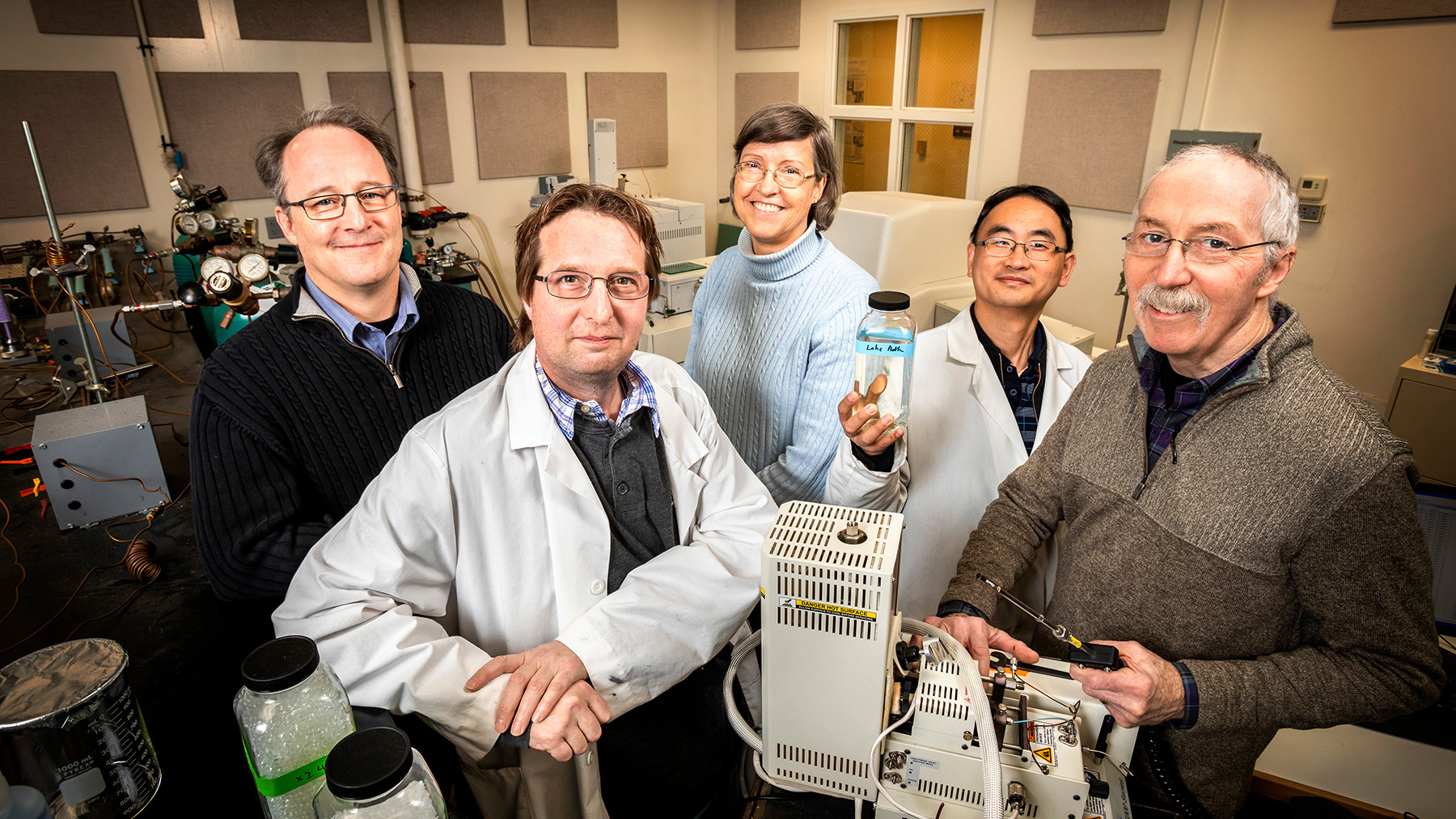
The mind-boggling amount of microplastics in the environment is becoming a greater concern as early studies suggest serious health effects from human exposure to the plastic particles. Taking these effects seriously, the United Nations recently endorsed a historic resolution to end global plastic pollution, including microplastics.
At the Illinois Sustainable Technology Center (ISTC), researcher John Scott is studying microplastics in landfills, rural streams, and city drinking water to further understand where they are coming from and how they move in the environment.
Illinois landfills and microplastics
Since about 80 percent of all plastic waste is destined for landfills, they are a logical place to look for microplastics. Landfills that use plastic liners underneath the waste piles routinely pump out leachate, the waste “soup” that has drained into the liners. The leachate is sent to wastewater treatment plants, which are not designed to handle plastic waste.
As a result, plastic entering water treatment plants can end up either in the treated wastewater, where it is ultimately discharged to rivers or lakes, or in the sludge, called biosolids. Scott’s team has found that 99 percent of microplastics are in the biosolids, which are typically applied to agricultural lands as fertilizer. This means that microplastics taken from landfills are released back into the environment.
In this project, the researchers hypothesized that landfill leachate is the most significant source of microplastics taken to wastewater treatment plants. They compared the contribution of microplastics in leachate with other potential sources.
Although the study is still ongoing, the significance of this finding is that, although it is not feasible to treat the enormous amount of wastewater that comes into a treatment plant every day, treating the smaller amount of leachate may be an option.
“If our hypothesis is correct, then addressing plastic pollution in landfill leachate may be a more efficient and cost-effective way to reduce its environmental loading,” Scott said. “It’s better to treat the waste further upstream.”
The project has been funded by the Illinois Hazardous Research Fund.
Rural Iowa streams
ISTC is partnering with the University of Iowa and the U.S. Geological Survey in the first statewide assessment of microplastics and co-contaminants in rural Iowa streams. Most research studies to date have focused on microplastics in ocean habitats. In contrast, the research team sampled stream water, fish tissues, and rural sediments for this study. They also examined the samples for other contaminants, such as herbicides and insecticides, pharmaceuticals, and per- and polyfluoroalkyl substances (PFAS).
Some of the sediment samples have the highest concentrations of microplastics that they’ve ever seen, said Scott. With the methodology they designed in 2020, they can detect microplastics as small as 20 micrometers, while other researchers are limited to 100-micrometer sizes.
More microplastics appeared in the soil sediments than in the streams and fish tissues.
“Some of the concentrations of microplastics we found in samples were astronomical,” Scott said. “If concentrations for other contaminants approached that percentage level in the soil, it would raise an alarm. Microplastics may not be as toxic as other contaminants, but when there is this much stuff loading into out sediments, the concentrations will get worse over time.”
These findings support the theory that most of the microplastics that go to the wastewater treatment plants end up in biosolids and are released into soils in agricultural areas.
One objective of the study is to investigate the relationship of microplastics to sediments and other contaminants, such as PFAS. Microplastics can harbor exotic bacteria that are much different from that in the surrounding environment. Previous studies have shown that contaminants concentrate on these materials at hundreds of times the background levels.
In addition, studies have shown that microplastics as small as 20 micrometers can be taken up by plants.
“We don’t know if microplastics affect agricultural land, but if we load enough into our soils, it’s going to have some adverse effects, like trying to grow plants in plastic,” Scott said.
St. Louis city and county drinking water
In a new three-year project, ISTC researchers’ role will be to investigate micro- and nano-plastics and other contaminants in surface waters, water treatment plants, and in tap water samples from residential households in St. Louis. Nanoplastics are particles that are even smaller than microplastics and are not visible to the naked eye or even under a simple optical microscope.
It is known that surface waters contain microplastics, but less is known about water distribution systems in the home and from water treatment facilities. Scott plans to trace microplastics found at water supply plants back to water distribution systems to determine if water softeners, dishwashers, and household plumbing can also be sources of microplastics.
Scott said he doesn’t expect to find microplastics originating from these sources, implying that in terms of microplastics, tap water is safer than bottled water, which contains large amounts of the plastic specks.
These efforts will be part of a larger project to determine an impact baseline for those contaminants in St. Louis city and county water systems, to survey community members to obtain their perceptions of drinking water quality, and to provide hot-spot mapping and policy recommendations for clean water investments and regulations.
Findings from the project will be provided to local water utility companies to begin to address micro- and nanoplastics in city water systems. Project partners also hope to promote equitable investments in clean water infrastructure.
The project is funded by the Missouri Foundation for Health. ISTC’s partners are Mixte Communications, Waterkeeper Alliance, and LH Consulting.
Because roadways are suspected to be another major contributor to microplastics pollution, Scott will soon begin another project, this one focused on microplastics in Michigan lakes that are highly affected by road salt.
—-
Media contact: John Scott, 217-333-8407, zhewang@illinois.edu
news@prairie.illinois.edu
This story originally appeared on the Prairie Research Institute News Blog. Read the original story.




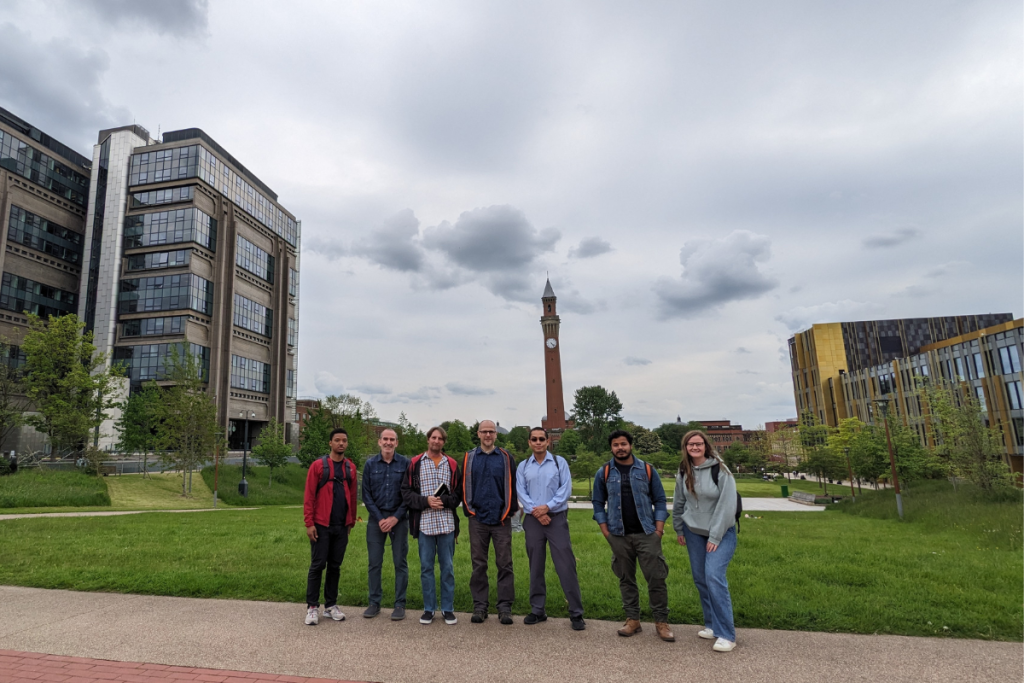






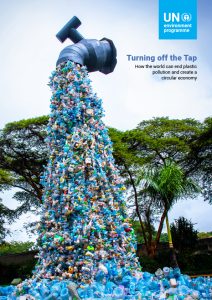 The WED website also links to
The WED website also links to 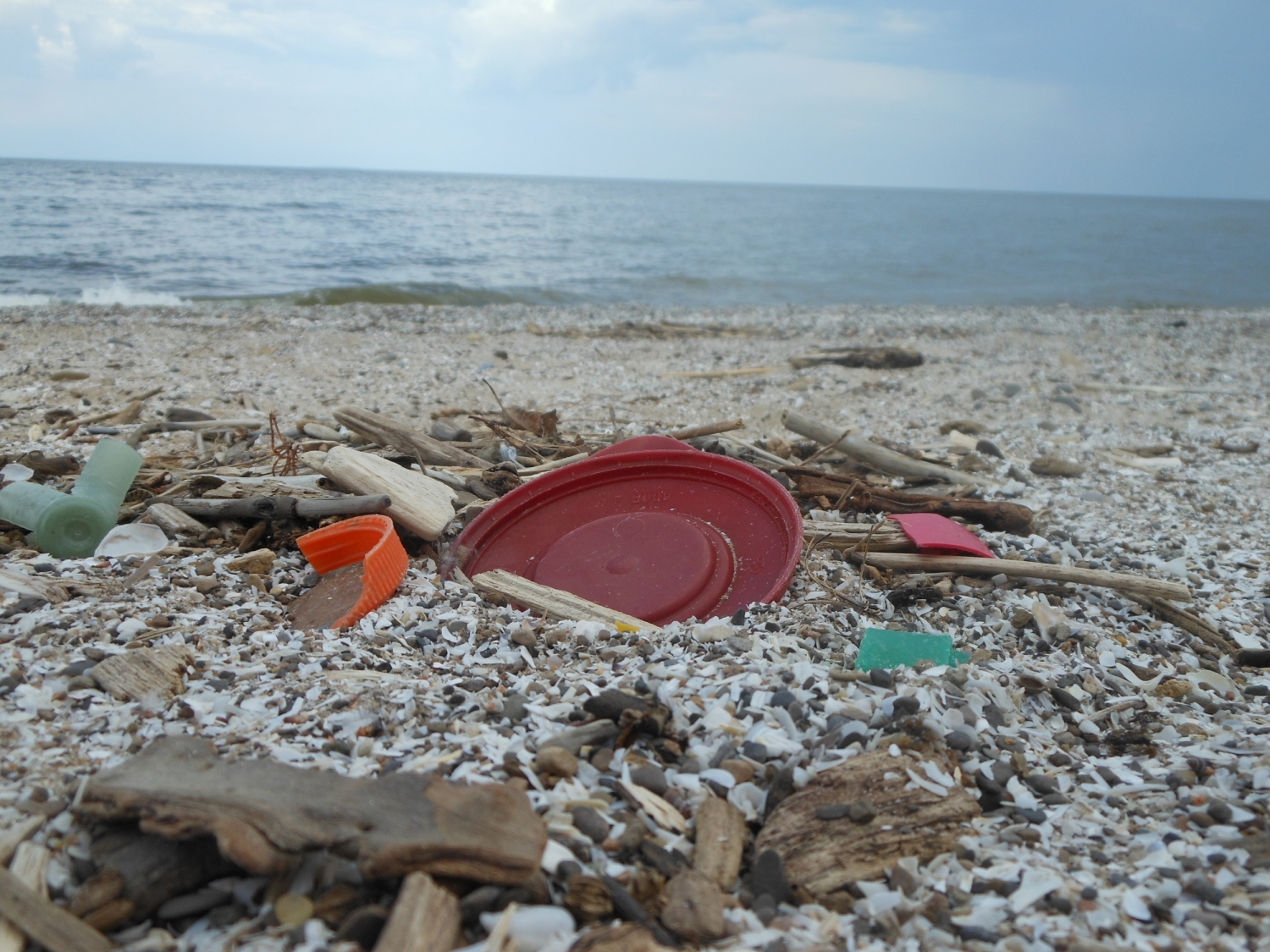
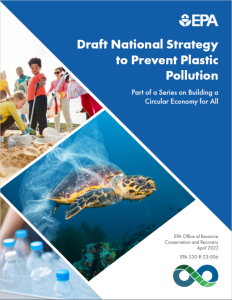 EPA has identified three key objectives for the strategy. The draft strategy document lists proposed actions associated with each objective.
EPA has identified three key objectives for the strategy. The draft strategy document lists proposed actions associated with each objective.
